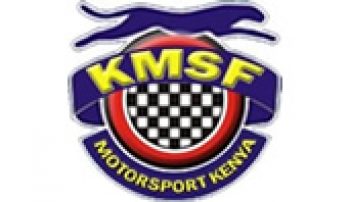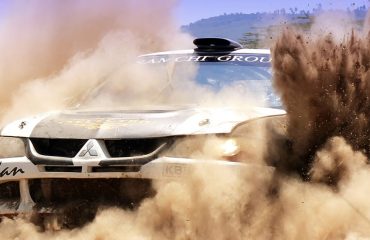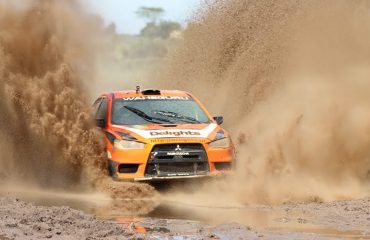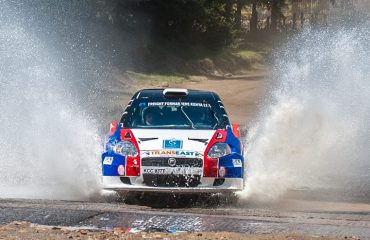Motorsport is the oldest organised sporting event in Kenya after cricket which was introduced in 1896 in Mombasa by a group of British soldiers docket in Mombasa and wanted to stretch after many months in the sea.
There were few vehicles in Kenya at the turn of the last century in Kenya and pioneer white settlers did odd hill climbs, another to write much about.
But on Africa started opening up and once Nairobi was connected with Johannesburg by road, a group of cowboys mooted the idea of a road race between the two cities.
In October 1936 several adventurers rated over mugs of beer the 4,800km Nairobi-Johannesburg race which was won by C.L. “Fairly” Engelbrecht. Rallying was born from then on.
After the end of the Second World War, one Eric Cecil, the Chairman of the Competition Committee of the East African Automobile Association (EAAA) challenge his peer to attempt the journey south as individuals and compare times. He won one of the marathon races in a Skoda.
Cecil was driven by a single-minded purpose to establish a motorsport culture in Kenya and actually established the Langa Langa racing track in Nakuru and “Rolund the Mountain Trial” in Mount Kenya.
But to some this was boring and waste of time. They needed something potent.

Safari Rally World’s Toughest Rally – Photo Credit, Simon Mulumba/cmoncy
So in January 1952, so the story goes on, Cecil, his cousin Neil Vincent and Eric Tromp were sharing a drink at a resort in Limuru, near Nairobi.
As the night wore on Cecil and Tromp asked Vincent why he shunned Langa Langa.
‘I can’t be bothered running around in circles. But if you could organise an event where we get into our cars, slam the doors and go halfway across Africa and back and the first car was the winner, then I will enter,” said Vincent.
This simple statement led to the birth of the Safari Rally. Cecil’s mind went on a spin and several mugs of beer later he suggested a trip around the 68,000km Lake victoria. Drivers would choose any direction with only two control points near Bukoba.
Though corruption was non existent then, Vincent rejected the idea to avoid cheating especially at the ferry crossing area. They needed a rally that would test stamina of man and technical potency of a car. It would be exciting to rally and Cecil finally settled for rallying.
Cecil returned to the EAAA and sold the long distance event concept but the bosses were not interested. They considered EAAA as a body to solely service the motoring not motorsport public.”They told me that they not interested,” Cecil told this writer in an interview at the exclusive Muthaiga Country Club in 2002 when he came to Kenya as a guest of the Safari Rally.
‘But God presented me with a gift,” he said.
Cecil returned to the EAAA in February 1952 days after Queen Elizabeth received the news of his father’s death King George VI while lodging at the Treetops in Nyeri.
“Please do allow the motoring public in Kenya commemorate the coronation of the queen through a long distance event,” Cecil pleaded to the EAAA.
Kenya was a British colony and EAAA had not alternative but to give the nod. But Cecil was told to look for money elsewhere. So Cecil went looking for sponsors .
The East African Standard newspaper and Shell Oil came to the rescue as title sponsors of Pounds 500 each. The Safari was born.
There were 15 finishers in the first Safari. The second hurdle was looking for an ideal date_ a long weekend when little else happened. Cecil and his team settled of the Easter weekend.
Though never an economics student, Cecil settled on the “toughness slogan as a marketing tool, though the “Toughest Rally in the World” which still survive to this day.
With more and more drivers competing and less and less finishing, word round that there existed a very tough rally through coverage in local media and later specialised European specialty motoring magazines.
The pioneers settled on a 3,200 miles (5,160km) distance. Though Kenya was under the state of Emergency because of the Mau Mau uprising the world continued to me mesmerised by the images of the wild, untamed Africa.
European and later drivers from Asia started coming and for 19 years returned home empty handed until 1972 when Hannu Mikola and Gunnar Palm in a Mord Escort RS1600 returned the Safaro coveted trophy to Eujrope.
In 2016, the World Rally Championship (WRC) Promoter , the commercial rights holder of the championship said the world is thirsting for those African continent images to make the championship rele-visually attractive.
Through social media platform, the world saw the same images in the 2015 Safari Rally and the Youtube video received over 160,000 hits moments after it was upload though 44 days after the end of the safari.






You must be logged in to post a comment.